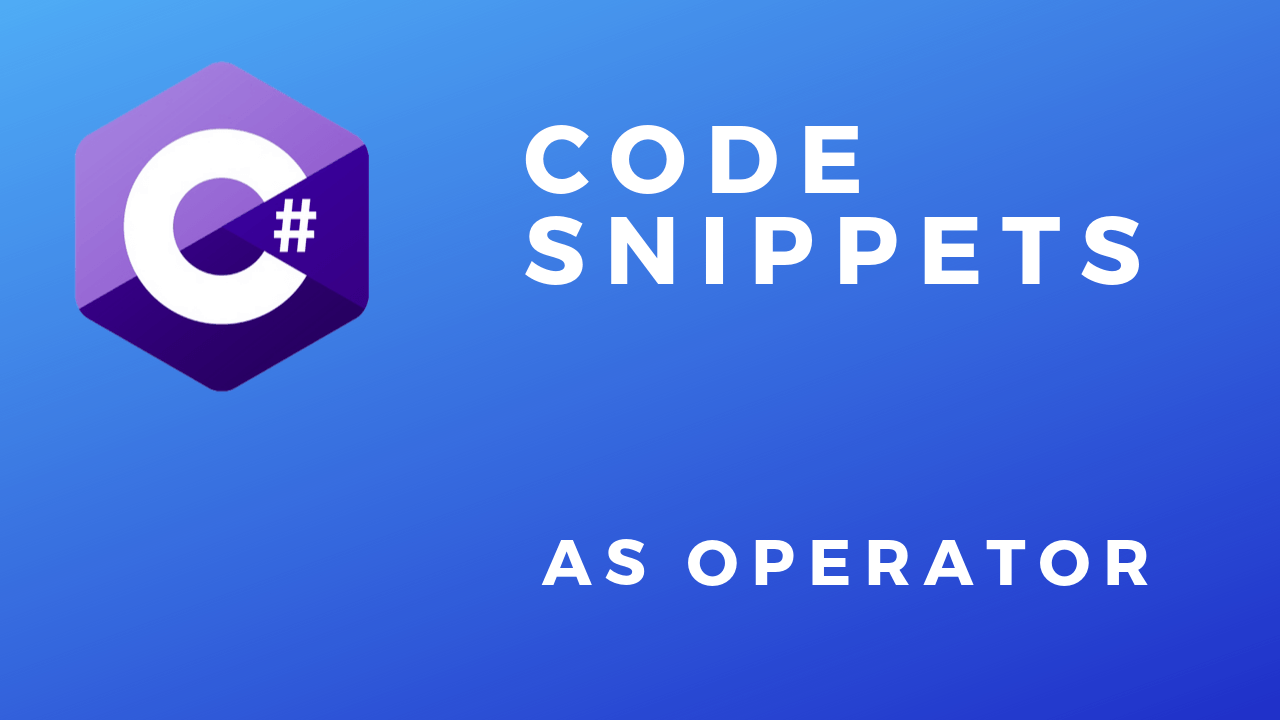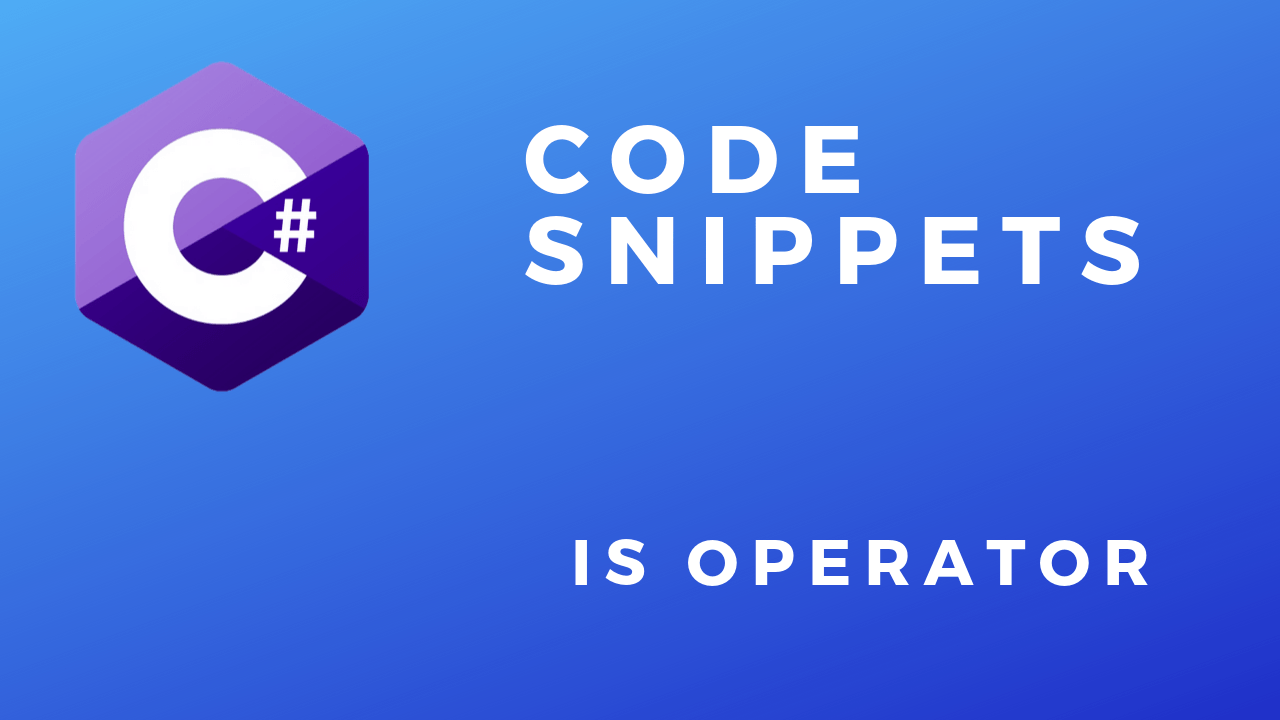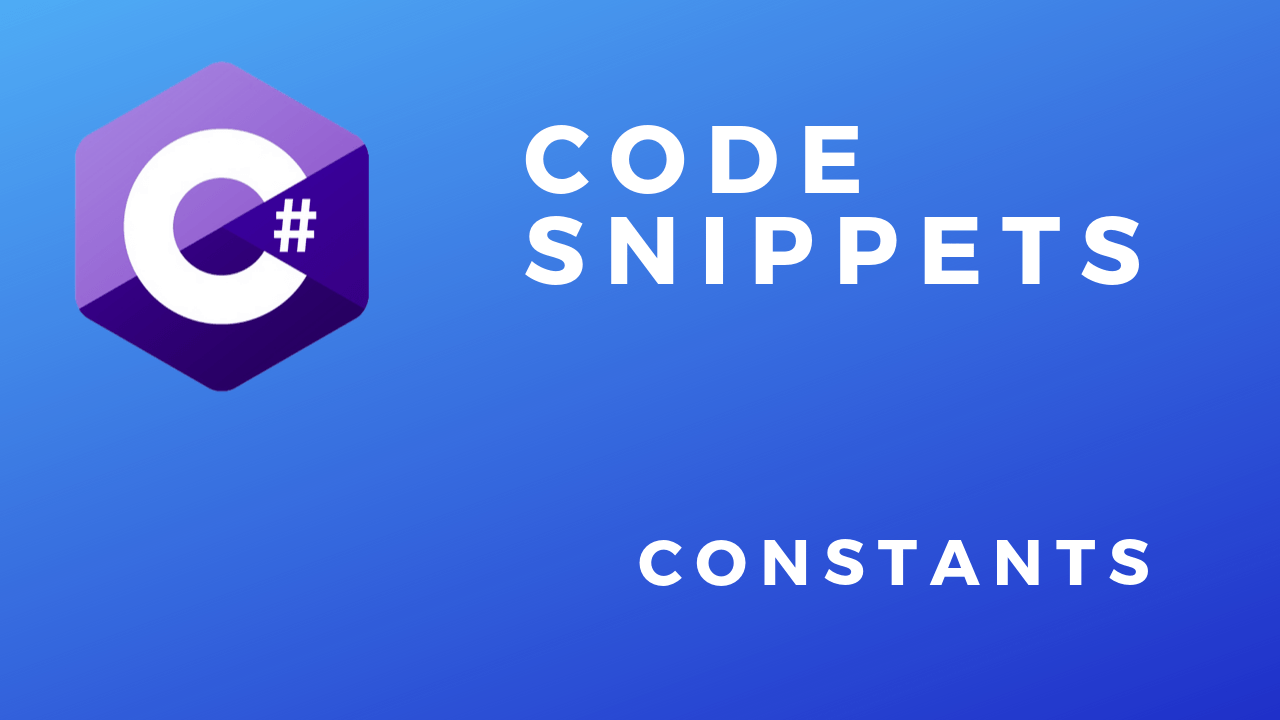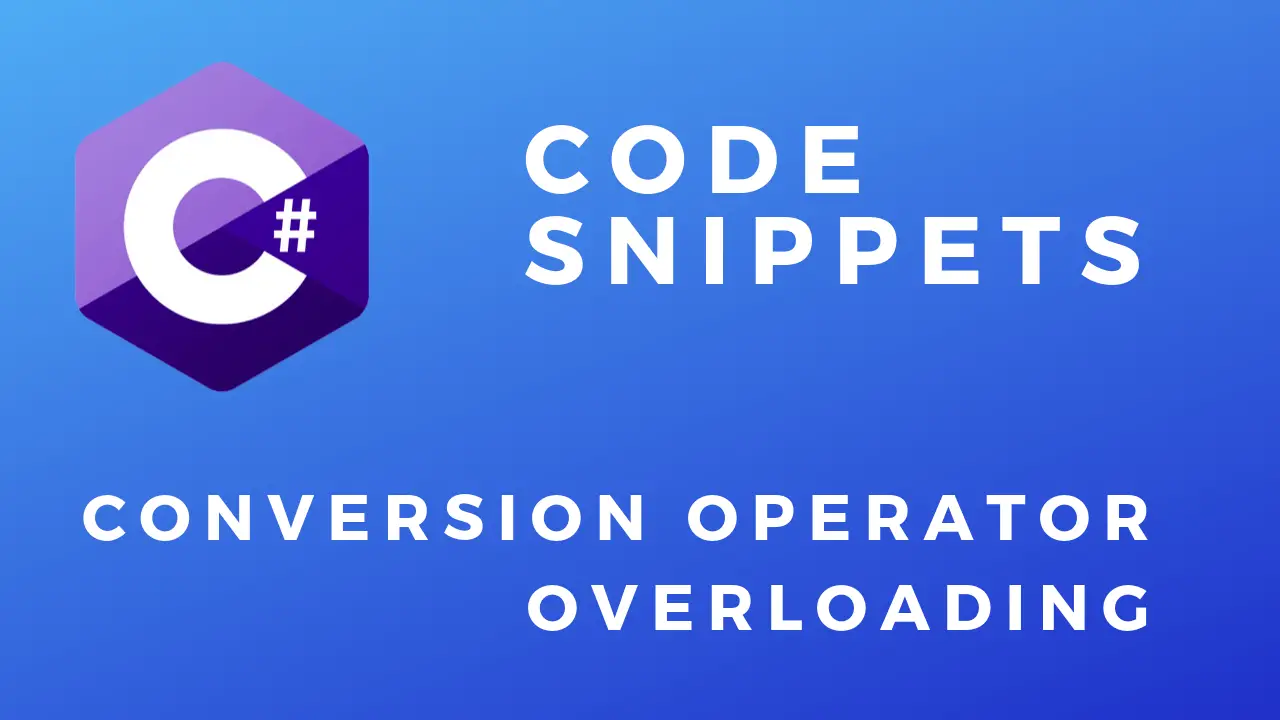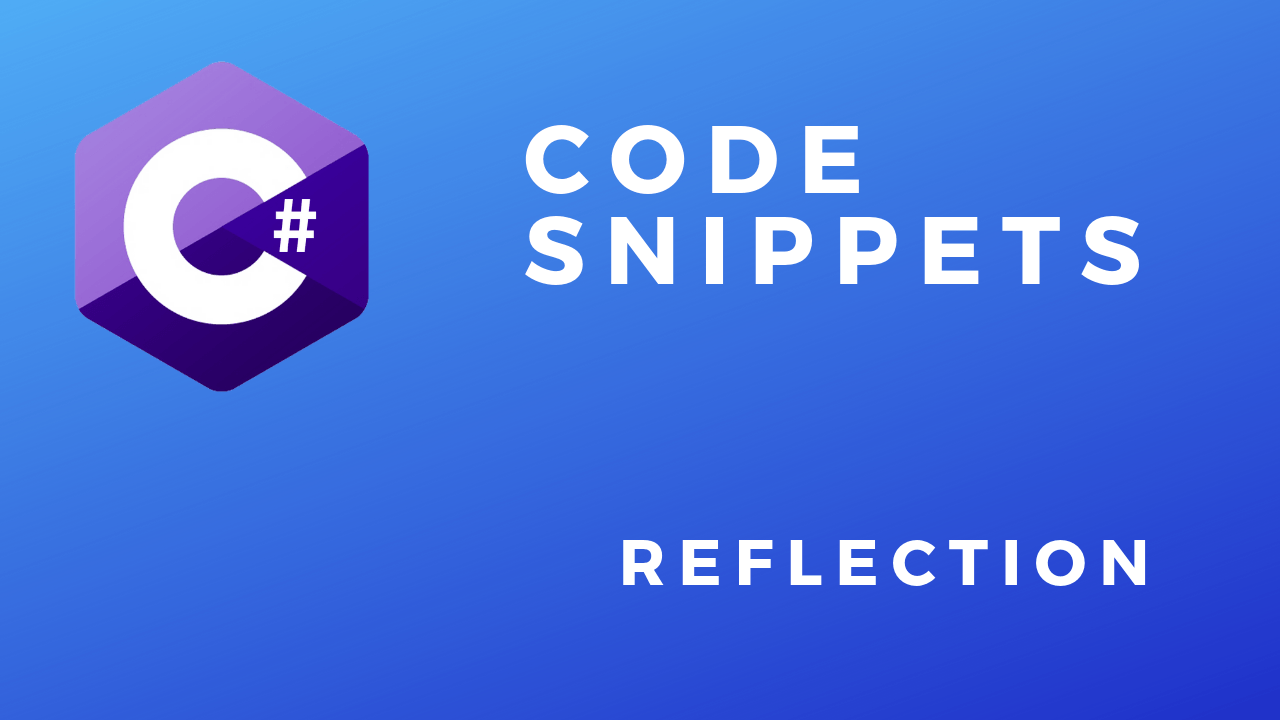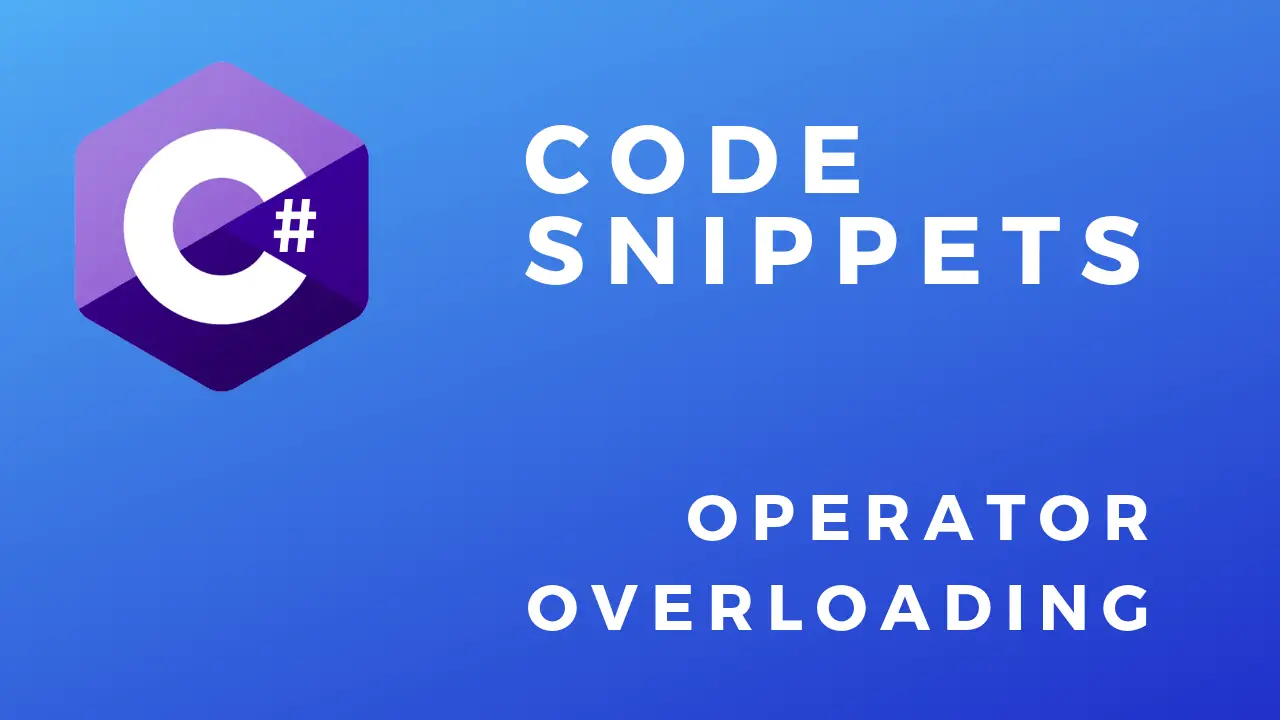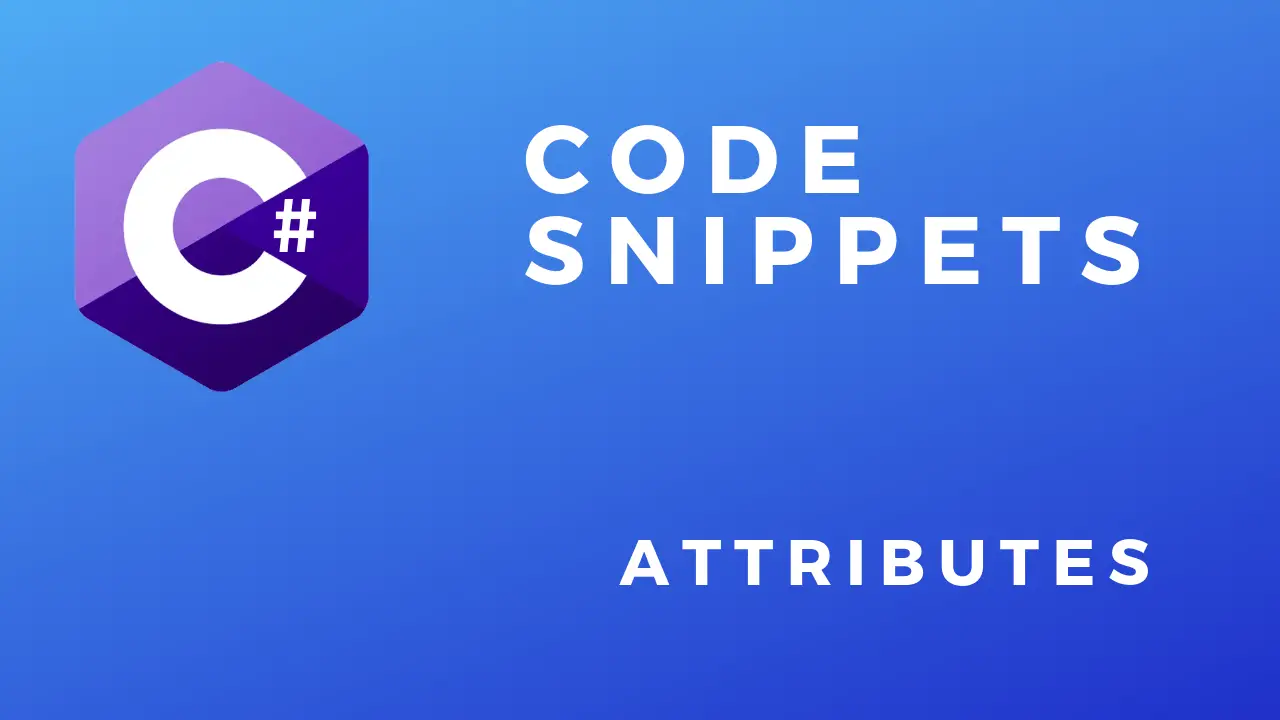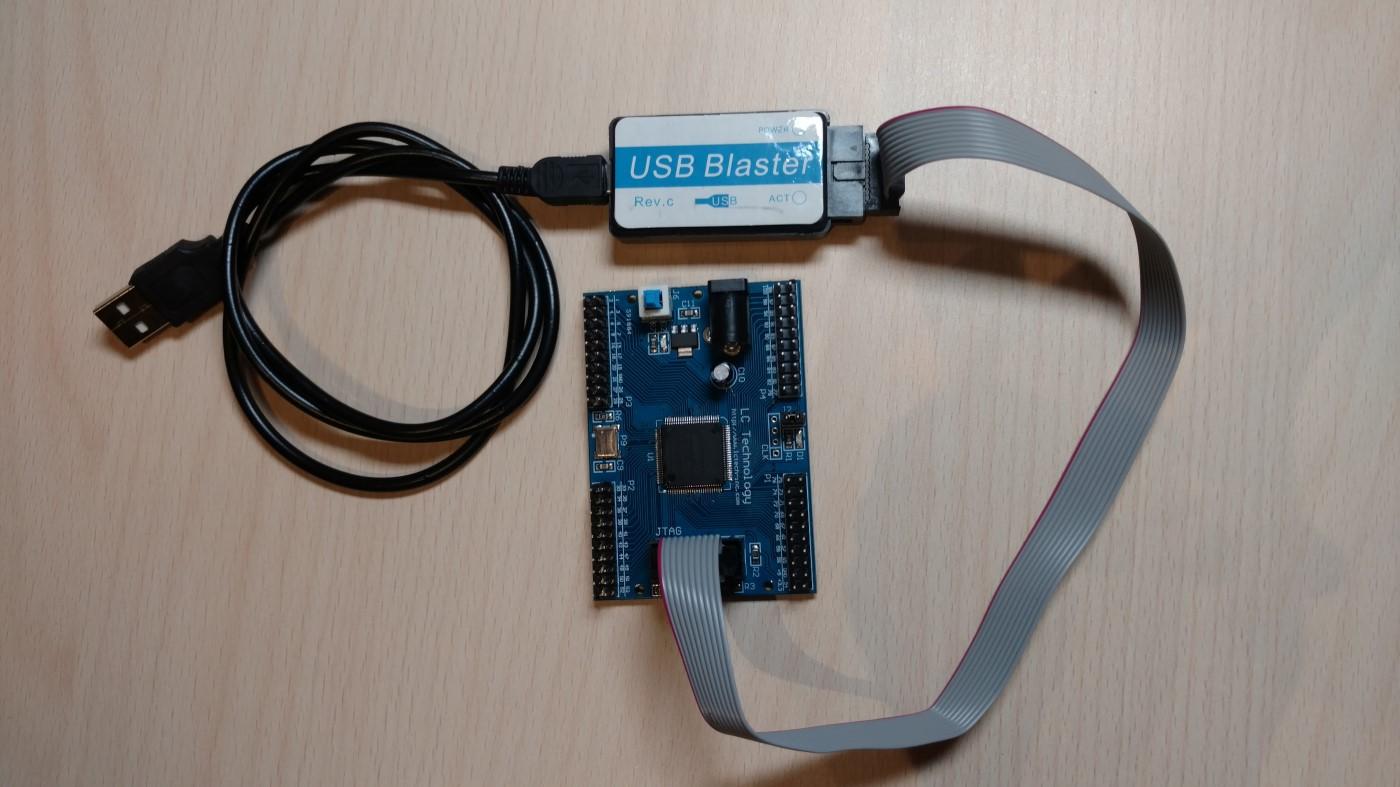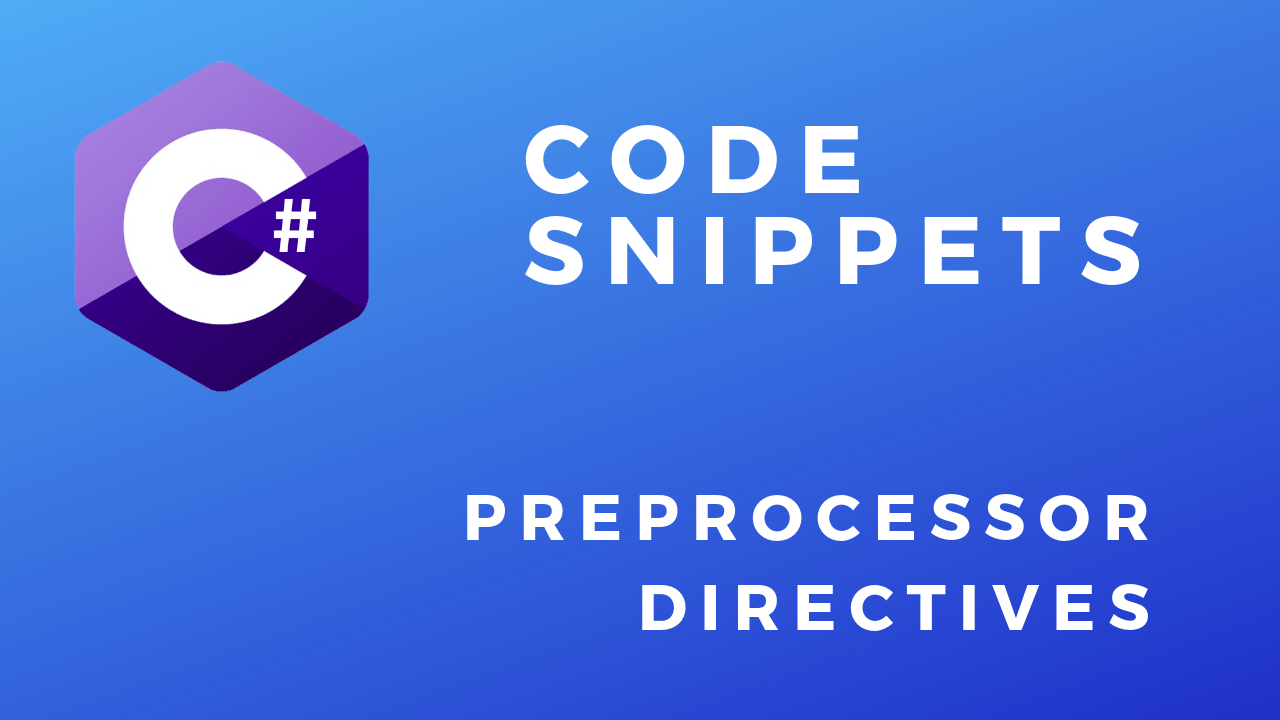C# as Operator
In this tutorial, we will learn how to use the as operator in C#. The as operator is used to cast objects into different types. It is similar to the is operator. They can both be used to check if an object is of a certain type. If the conversion is successful the converted object gets returned else a null will be returned.
